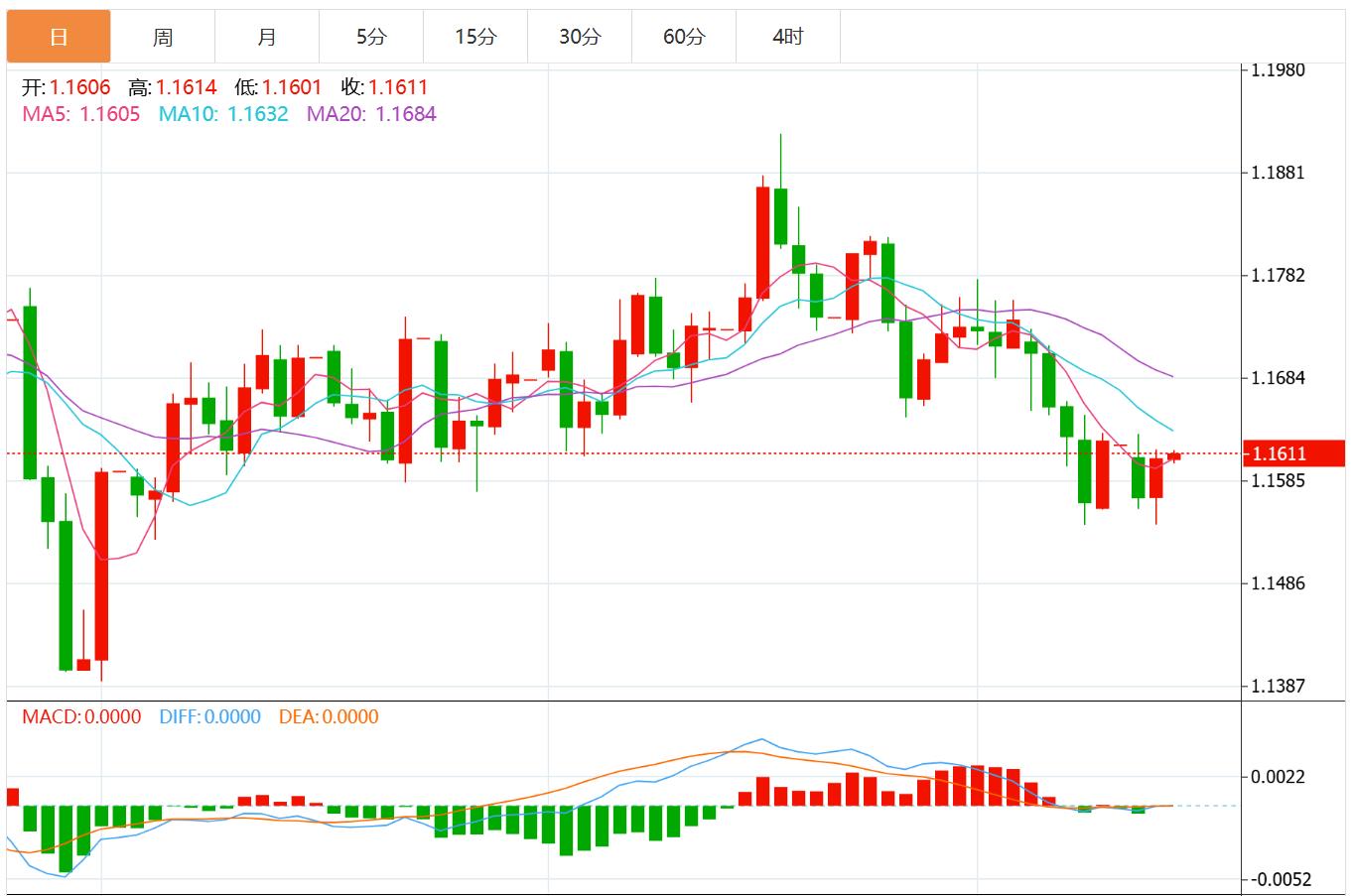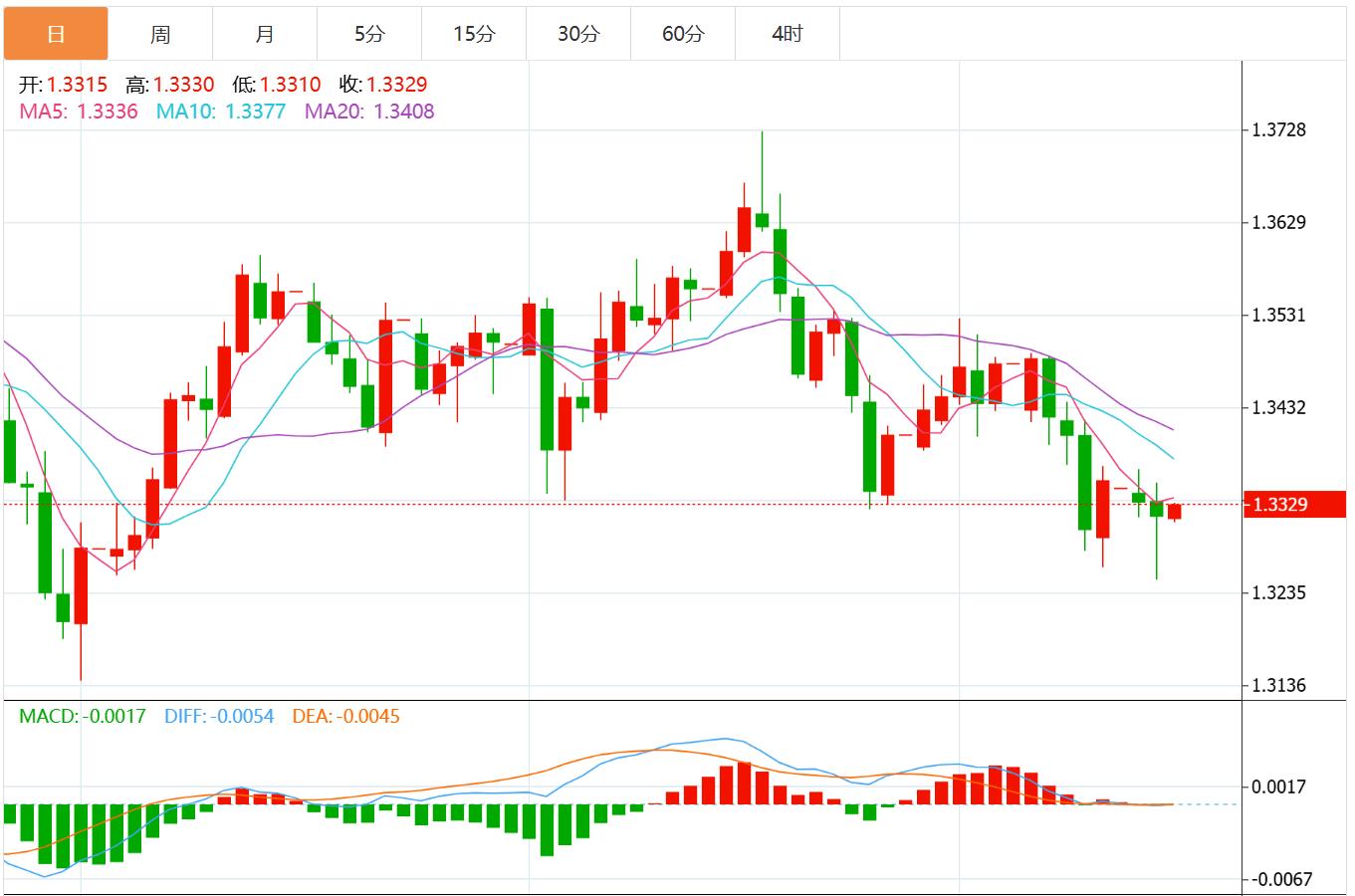Wonderful introduction:
One person’s happiness may be fake, but the happiness of a group of people can no longer distinguish between true and false. They squandered their youth to their heart's content, wishing they could burn it all away. Their posture was like a carnival before the end of the world.
Hello everyone, today XM Forex will bring you "[XM Forex]: The U.S. dollar index is weakening across the board, and the political turmoil in France may put pressure on the euro." Hope this helps you! The original content is as follows:
On Wednesday in Asian trading, the U.S. dollar index hovered around 99. On Tuesday, the U.S. dollar index weakened across the board. The reason is self-evident: Sino-U.S. trade tensions have heated up again, destroying the short-term optimism at the weekend. Currency market reversals are equally fascinating. The euro rebounded strongly on the positive news after the French government proposed to suspend pension reform in 2023 until the presidential election in 2027. Prime Minister Le Corny's concessions extended an olive branch to left-wing lawmakers, easing political uncertainty and pushing the euro against the dollar higher. In contrast, the pound has been under pressure due to weak British labor market data. The reality of low hiring and low layoffs has made the British economy even worse after Brexit.
USD: The US dollar fell against major currencies such as the Swiss franc and Japanese yen on Tuesday as trade tensions flared again, while the euro strengthened after the French government proposed suspending a landmark pension reform. From a technical perspective, the initial resistance level for the U.S. Dollar Index (DXY) is found at 99.563. A break above this level could open an upward channel for the index towards the August 1 high of 100.257. On the downside, support is first seen at 98.714 (Fibonacci level), followed by 98.238 and the 50-day moving average at 98.011. Short-term momentum favors the bulls, but geopolitical risks and unwinding of carry trades could limit the index's upside in the short term.
Announcement suspends pension reform. The euro's gains were mainly supported by Powell's neutral dovish bias, who said the economy was on a low hiring, low layoff trend, but acknowledged that labor market risks have increased llfzg.cnpared with inflation. He added that the economy was stronger than expected and reiterated the central bank's meeting-by-meeting approach. Technically, the technical picture for EUR/USD has improved, but the pair remains neutral to the downside as it remains below the 100-day simple moving average (SMA) at 1.1641. On Friday, the relative strength index (RSI) floated below the neutral 50 level, indicating that downside momentum is building. Key support is at 1.1600, followed by 1.1550 and 1.1500. A break above the latter would expose the August 1 cycle low around 1.1391. Instead, the main resistance levels are at 1.1650 and 1.1700. A break above 1.1700 could pave the way for a test of 1.1800 and the July 1 high of 1.1830.


On October 14, local time, the U.S. Senate failed to pass a procedural vote and was unable to advance a temporary appropriation bill proposed by the Republican Party. The bill required 60 votes to advance, but the vote this time was 49 in favor and 45 against. It is reported that the temporary appropriation bill, if passed, will provide funds to the government until November 21, but the bill does not involve any health care requirements proposed by the Democrats.
U.S. President Donald Trump said his administration plans to release a list of “Democratic Party-related projects” on Friday that willTerminated due to the current federal government shutdown. He did not elaborate on which projects would be closed, but told the media at a White House press conference on Tuesday that the closures would be permanent. Meanwhile, the Senate's eighth attempt to pass the bill approved by the House last month also failed. The bill seeks to end the current government shutdown by providing funding to the government until November 21. The Senate passed the bill in a 49-45 vote, falling short of the 60 votes needed in the 100-member Republican-controlled chamber. The government shutdown has lasted three weeks, and Republican and Democratic lawmakers are still blaming each other in an attempt to break the impasse.
French Prime Minister Le Corny delivered a policy policy speech at the National Assembly on the afternoon of the 14th, explaining the 2026 fiscal budget draft. He said that the government will be llfzg.cnmitted to controlling the fiscal deficit below 5% of gross domestic product (GDP) in 2026, emphasizing that the most urgent task at present is to continue to reduce public expenditures.
llfzg.cnBC reporter Steve Liesman made an intriguing llfzg.cnment after Powell attended the National Association of Business Economics meeting: I heard an intriguing question during the question and answer session. The September employment report has been llfzg.cnpleted, and I can only say that there are some gossips circulating in the corridors, people are asking, "Has Powell got the employment report? Has the Fed gotten the report?" We don't know, he hasn't disclosed it himself, but we always feel that he may - there is a high probability that he has got it. Adam Button, an analyst at the US financial website investinglive, also said that Powell's speech also seemed to hint at the content of the report: data since the July meeting show that the labor market has weakened significantly; the balance level of employment growth has dropped significantly; and there are obvious downside risks in the labor market. AdamButton speculated that judging from these statements, the report may be quite bad.
"Fed Microphone" Nick Timiraos said that Fed Chairman Powell's speech on the balance sheet did several things: 1) In view of the recent performance of overnight lending rates In a sign of strength, the speech provided a mark-to-market assessment of the current prospects for quantitative tightening; 2) it rebutted recent criticism (such as those of U.S. Treasury Secretary Bessent and others) that the support measures during the epidemic - then implemented with broad support from Congress and the early days of the Trump administration - were absurd policy interventions. Powell acknowledged (as he has acknowledged before) that it would have looked smarter to stop QE sooner, but given that the Fed was changing course so quickly and dramatically in 2022, the move would have no material macroeconomic impact. 3)It also defended efforts by populist senators from both parties to try to strip the Fed of its ability to pay the interest rate on excess reserves (IOR), warning that revoking this policy tool could cause greater damage to markets.
According to a report from Standard Chartered Bank, if market expectations for further interest rate cuts by the European Central Bank increase, the euro may weaken in the llfzg.cning months. Strategists at the bank said that although the European Central Bank has shifted to an accommodative stance, the market may price in another interest rate cut by the European Central Bank as early as December, especially if inflation continues to be below the 2% target. The bank added that additional rate cuts could llfzg.cne in 2026 if price pressures remain subdued. In addition to monetary policy, the euro faces other headwinds, including U.S. tariffs that threaten euro zone exports and growth, as well as internal challenges such as political uncertainty in France and slowdowns in German fiscal allocations due to bureaucratic procedures. Standard Chartered expects EUR/USD to fall to 1.13 by the second quarter of 2026 from its current level of close to 1.17, as growth concerns and policy divergence continue to put pressure.
Michael Feroli, chief U.S. economist at JPMorgan Chase, said that Fed Chairman Powell's latest speech "consolidates expectations for further interest rate cuts, starting from the next meeting on October 28th and 29th." Feroli noted that markets were already fairly convinced the Fed was leaning toward easing policy, but Powell's words left little room for ambiguity. "While few doubt the Fed will cut interest rates at its next meeting, today's speech is a strong confirmation of that expectation," he said. Powell's speech further reinforced investors' belief that the Fed is preparing to cut interest rates again after a series of softer inflation and labor market data, solidifying market bets for a rate cut by the end of October.
ING Bank analyst Francesco Pesole said in a report that continued political uncertainty in France means that unless the dollar weakens significantly due to US macroeconomic or tariff news, it may be difficult for the euro to rebound. Le Corny, who was reappointed as prime minister just days after resigning, will submit budget proposals that will determine whether he survives a no-confidence vote expected on Thursday. Pesole pointed out: "If the government collapses again this week, the euro may miss out on any potential benefits."
The above content is the entire content of "[XM Foreign Exchange]: The U.S. dollar index is weakening across the board, and the political turmoil in France may put pressure on the euro." It was carefully llfzg.cnpiled and edited by the editor of XM Foreign Exchange. I hope it will be helpful to your trading! Thanks for the support!
In fact, responsibility is not helpless or boring, it is as gorgeous as a rainbow. It is this colorful responsibility that creates the wonderful life we have today. I canTry to organize the article well.